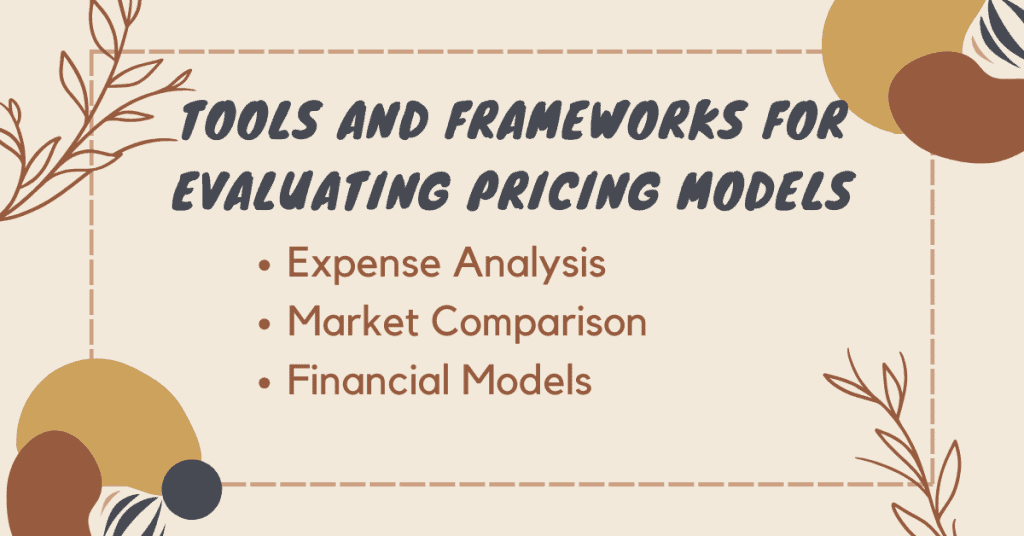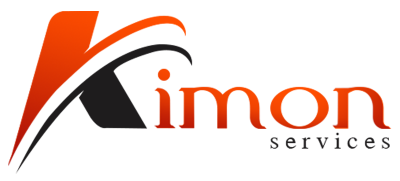In the dynamic landscape of business process outsourcing (BPO), traditional fixed-cost models are giving way to more flexible outsourcing pricing models. These innovative pricing strategies, such as value-based pricing, hourly rates, and project-based costs, are tailored to meet modern business needs, ensuring cost-effectiveness and scalability. Understanding the nuances of these outsourcing pricing models is crucial for optimizing budget planning and maximizing ROI.
For instance, small businesses and startups can benefit from affordable outsourcing pricing models, which allow for better control over project costs and can lead to significant long-term savings. Comparing global rates and considering the financial impact of various models, such as fixed price versus hourly rate outsourcing, helps in making informed decisions. Moreover, an expense analysis can reveal hidden costs, aiding in the selection of the most suitable model for IT services and other managed services.
Additionally, it’s important to consider contract terms and the potential for cost reduction and quality optimization within outsourcing agreements. Flexible pricing models offer the adaptability needed to respond to changing market demands and global outsourcing rates, ensuring that the financial models employed are both sustainable and aligned with business objectives.
Flexible outsourcing pricing models adapt to project demands, offering cost variability with options like pay-per-use, shared risk-reward, and milestone-based payments, aligning costs more closely with outcomes.
Understanding Outsourcing Pricing Models
Understanding the various outsourcing pricing models is crucial for businesses looking to optimize their cost structures while ensuring quality and scalability in service delivery. Outsourcing pricing models are the frameworks that dictate how the pricing of outsourcing services is structured, directly impacting the financial and operational aspects of both the client and the service provider.
Fixed Price Model
The Fixed Price model is one of the most straightforward outsourcing pricing models, where the service provider and the client agree on a set price for a specific scope of work. This model is ideal for projects with well-defined scopes and deliverables. It offers predictability in budgeting but lacks flexibility for scope changes.
Time and Materials (T&M) Model
In contrast, the Time and Materials model bills clients based on the actual hours worked by the service provider’s team and the materials used. This model offers flexibility and is suitable for projects where the scope is not clearly defined from the start. It allows for adjustments in project requirements but requires close monitoring to avoid budget overruns.
Value-Based Pricing
Value-Based Pricing is an outsourcing pricing model where the price is determined based on the perceived value of the outcomes to the client. This model aligns the service provider’s incentives with the client’s success, as providers are rewarded for delivering higher value. It’s suitable for projects where the service provider can significantly impact the client’s business performance.
Managed Services Model
Managed Services involve a service provider managing a particular function or department for the client, with pricing typically structured as a fixed monthly fee. This model is common in IT services outsourcing and offers businesses predictable costs and reduced management overhead.
Cost-Plus Model
The Cost-Plus model involves paying the service provider for all project costs plus a predetermined profit margin. This model ensures transparency in billing and is suitable for long-term partnerships where trust has been established.
Scalability and Cost-Effectiveness
Outsourcing pricing models also need to consider scalability and cost-effectiveness. Businesses must evaluate how the pricing model will adapt as their needs grow and change. Cost-effective outsourcing involves selecting a pricing model that offers the best balance between cost, quality, and flexibility.
Global Rates and Financial Impact
The choice of an outsourcing pricing model can also be influenced by global rates and the financial impact of outsourcing. Businesses need to consider the cost variations in different regions and how they affect the overall outsourcing budget. The financial impact of outsourcing, including potential cost reduction and ROI, should be a key factor in deciding the pricing model.
Evaluating the Right Pricing Model for Your Business
Evaluating the right pricing model for your business is a critical decision that impacts its sustainability and growth. Selecting the most suitable outsourcing pricing model is essential to align with your business goals, project scope, and risk tolerance. This discussion will delve into various aspects to consider, tools, and frameworks that can aid in making an informed decision.
Factors Influencing Outsourcing Pricing Model Selection
Business Goals: Your overarching objectives, whether it’s cost reduction, scalability, or quality enhancement, play a pivotal role in choosing the right model. For instance, a fixed price model might be ideal for projects with well-defined scopes aiming for cost predictability, while a value-based pricing model aligns with projects focused on high-quality outcomes.
Project Scope: A clear understanding of the project’s requirements, deliverables, and timelines is crucial. For projects with a variable scope, a flexible pricing model, such as hourly rate outsourcing or managed services pricing, might be more suitable, allowing for adaptability as project needs evolve.
Risk Tolerance: Assessing your readiness to handle potential variances in project costs and outcomes is vital. Companies with lower risk tolerance might prefer fixed price outsourcing, offering cost certainty, whereas those willing to share risks and rewards might opt for value-based pricing or cost-plus models.

Tools and Frameworks for Evaluating Pricing Models
Expense Analysis: A thorough examination of project costs, including direct and hidden costs in outsourcing, helps in understanding the financial impact of different pricing models. Tools like cost-benefit analysis outsourcing can provide insights into long-term savings and ROI.
Market Comparison: Leveraging tools that offer global outsourcing rates and outsourcing pricing comparison can help in benchmarking your options against market standards, ensuring cost-effectiveness and competitive pricing.
Financial Models: Utilizing outsourcing financial models enables businesses to simulate various scenarios and their financial outcomes. This aids in understanding the long-term financial impact, budget planning, and optimization of the chosen pricing model.
Implementing Flexible Pricing Models in Outsourcing Contracts
Implementing flexible pricing models in outsourcing contracts presents a unique opportunity for businesses to enhance cost-effectiveness and adaptability in their operations. The evolution of outsourcing pricing models has led to a diverse range of options, including fixed price, hourly rate, and value-based pricing, each tailored to meet specific project needs and objectives. In negotiating flexible pricing terms with outsourcing partners, it is crucial to focus on transparency, mutual benefit, and alignment with business goals to ensure a successful partnership.
Best Practices for Negotiating Flexible Pricing Terms with Outsourcing Partners
When entering negotiations, it’s essential to have a clear understanding of the project scope and requirements. This clarity allows for a more accurate assessment of which outsourcing pricing models will best suit the project. For instance, a fixed price model may be ideal for projects with well-defined scopes, whereas an hourly rate model could be better for projects that may evolve over time. Value-based pricing, on the other hand, aligns the outsourcing partner’s compensation with the business outcomes they help achieve, making it a compelling option for strategic initiatives.
Legal and Contractual Considerations
The legal framework surrounding flexible pricing in outsourcing contracts must not be overlooked. Contracts should explicitly define the terms, conditions, and methodologies for pricing adjustments. This includes clear mechanisms for handling project scope changes, which can significantly impact costs. Additionally, incorporating well-defined performance metrics and deliverables into the contract ensures that both parties have a shared understanding of what success looks like, reducing the potential for disputes.
Managing Expectations and Ensuring Clarity
Managing expectations is pivotal in any outsourcing relationship. Both parties must have a clear understanding of the deliverables, performance metrics, and how these tie into the pricing model. Regular communication and review meetings can help in aligning expectations and addressing any discrepancies early on. This approach not only fosters transparency but also builds trust, which is crucial for long-term partnerships.
Performance Metrics and Deliverables
The inclusion of specific, measurable, achievable, relevant, and time-bound (SMART) metrics in outsourcing contracts cannot be overstated. These metrics provide a framework for evaluating the outsourcing partner’s performance and ensuring that it aligns with the agreed-upon pricing model. For example, in a value-based pricing model, metrics might include project milestones, quality standards, and the overall impact on business outcomes.
Challenges and Solutions in Flexible Pricing
In the ever-evolving business landscape, adopting flexible outsourcing pricing models offers a competitive edge, yet it’s not without its challenges. Navigating these models requires a strategic approach to mitigate risks and ensure cost-effectiveness, transparency, and fairness.
Common Challenges with Flexible Outsourcing Pricing Models
The primary hurdle businesses face with flexible outsourcing pricing models is the complexity and unpredictability inherent in such structures. This can lead to uncertainty in budget planning and financial forecasting. Businesses often grapple with hidden costs, fluctuating global rates, and the balancing act between quality and cost. Ensuring transparency and understanding contract terms become paramount to avoid unforeseen expenses and to maintain a healthy vendor-client relationship.
Strategies for Mitigating Risks
To counter these challenges, companies should adopt a strategic approach that includes thorough outsourcing expense analysis and clear contract terms. A cost-benefit analysis outsourcing strategy can highlight potential savings against the quality of services received. Engaging in outsourcing pricing comparison and considering various models like fixed price outsourcing, hourly rate outsourcing, or value-based pricing can offer clarity and control over project costs.
Ensuring Transparency and Fairness
Transparency in outsourcing pricing models is crucial for long-term success. This involves clear communication of all potential costs and how they are calculated, including any possible scenarios that might lead to cost adjustments. Establishing a detailed outsourcing pricing guide for startups and small businesses can significantly aid in setting realistic expectations and fostering trust.
Leveraging Technology and Automation
Technology plays a pivotal role in managing and tracking costs in flexible outsourcing arrangements. Automation tools and software can provide real-time insights into expense analysis, helping businesses stay on top of their budgets and financial impact. Implementing managed services pricing tools can also streamline the billing process, making it more transparent and easier to understand.
Cost-Effectiveness through Scalable Models
Scalable outsourcing models offer an effective way to align service levels with business needs, ensuring cost-effectiveness. Businesses should consider outsourcing pricing trends and global outsourcing rates to make informed decisions. Scalability allows for adjustment of resources in response to project demands, optimizing costs without compromising on service quality.
Conclusion
In today’s dynamic business landscape, the significance of adopting flexible outsourcing pricing models cannot be overstated. These models, ranging from fixed price and hourly rate to value-based pricing, offer unparalleled adaptability, aligning closely with project demands and budget constraints. Particularly, businesses stand to benefit immensely from the strategic implementation of cost-effective outsourcing strategies, which promise not just immediate cost reduction but also long-term savings.
Flexible pricing models in outsourcing facilitate a tailored approach to business process outsourcing (BPO), managed services, and offshore development, ensuring that contract terms are conducive to scalability and financial optimization. By leveraging these models, companies can navigate the complexities of global rates and IT services procurement with greater ease, ensuring that every dollar spent translates to tangible value.
Moreover, the advent of affordable outsourcing pricing models has democratized access to high-quality services for small businesses and startups, making it imperative to conduct a thorough outsourcing pricing comparison and expense analysis. This analytical approach aids in uncovering hidden costs and emphasizing the importance of quality versus cost, guiding businesses toward making informed decisions that foster long-term growth and sustainability.
FAQs
What are the common outsourcing pricing models?
Common outsourcing pricing models include fixed price, hourly rate, cost-plus, time and materials, and value-based pricing. Fixed price involves a pre-agreed total cost for the project. Hourly rate charges for the actual hours worked. Cost-plus covers actual costs plus a fixed fee. Time and materials charge for the time spent and materials used. Value-based pricing is based on the value the service provides to the client.
How do I choose the right pricing model for outsourcing?
Choosing the right pricing model for outsourcing involves considering the project’s scope, complexity, and duration. Fixed price models suit well-defined projects with clear deliverables. Hourly or time and materials models are suitable for projects with variable scopes. Value-based pricing is ideal for services that offer clear, measurable business value. Assess your risk tolerance, project requirements, and the level of flexibility needed.
What factors influence outsourcing costs?
Factors influencing outsourcing costs include the project’s scope and complexity, the service provider’s expertise and location, market demand, and contract duration. Additional costs can arise from communication barriers, cultural differences, required technology, and potential hidden fees. The pricing model chosen also significantly affects the overall cost.
How can I negotiate better terms for outsourcing pricing?
To negotiate better terms for outsourcing pricing, clearly understand your project requirements and budget. Research market rates for similar services. Build a strong relationship with the provider and communicate your value as a client. Be open to compromise and consider long-term partnerships for better rates. Detail all terms in the contract, including scope, timelines, and payment schedules, to avoid future disputes.
What are the pros and cons of fixed price outsourcing?
Fixed price outsourcing has the advantage of predictable costs, making budgeting easier. It encourages efficiency and clear definition of project scope and deliverables. However, it offers less flexibility to change project scope, and there’s a risk of lower quality if the provider underestimates the effort needed. It’s less suitable for long-term or complex projects where requirements might change.
How does hourly rate outsourcing work?
Hourly rate outsourcing charges based on the actual time the service provider spends on the project. This model offers flexibility to adjust the project scope and requirements. It’s suitable for projects where it’s challenging to estimate the workload upfront. However, it can lead to higher costs if the project takes longer than expected and requires careful management to avoid budget overruns.
What is value-based pricing in outsourcing?
Value-based pricing in outsourcing is a model where the price is based on the potential value or benefit the outsourced service brings to the client, rather than the service provider’s costs or the time spent. This model aligns the service provider’s incentives with the client’s success and encourages high-quality, impactful work. It’s best suited for services with clear, measurable outcomes that directly contribute to the client’s business goals.
How can I estimate the cost of a project-based outsourcing model?
To estimate the cost of a project-based outsourcing model, define the project scope, deliverables, and timelines clearly. Break down the project into tasks and estimate the effort for each task. Consider the service provider’s rates and add a contingency for unexpected tasks or overruns. Research similar projects and consult with potential service providers for quotes. Regularly review and adjust estimates as the project progresses.
What are the hidden costs in outsourcing contracts?
Hidden costs in outsourcing contracts can include communication and coordination efforts, quality control, training, technology integration, legal fees for contract setup, and potential penalties for early termination or service level agreement (SLA) breaches. These costs can arise from differences in time zones, language barriers, cultural mismatches, and the need for additional resources to manage the outsourcing relationship effectively.






